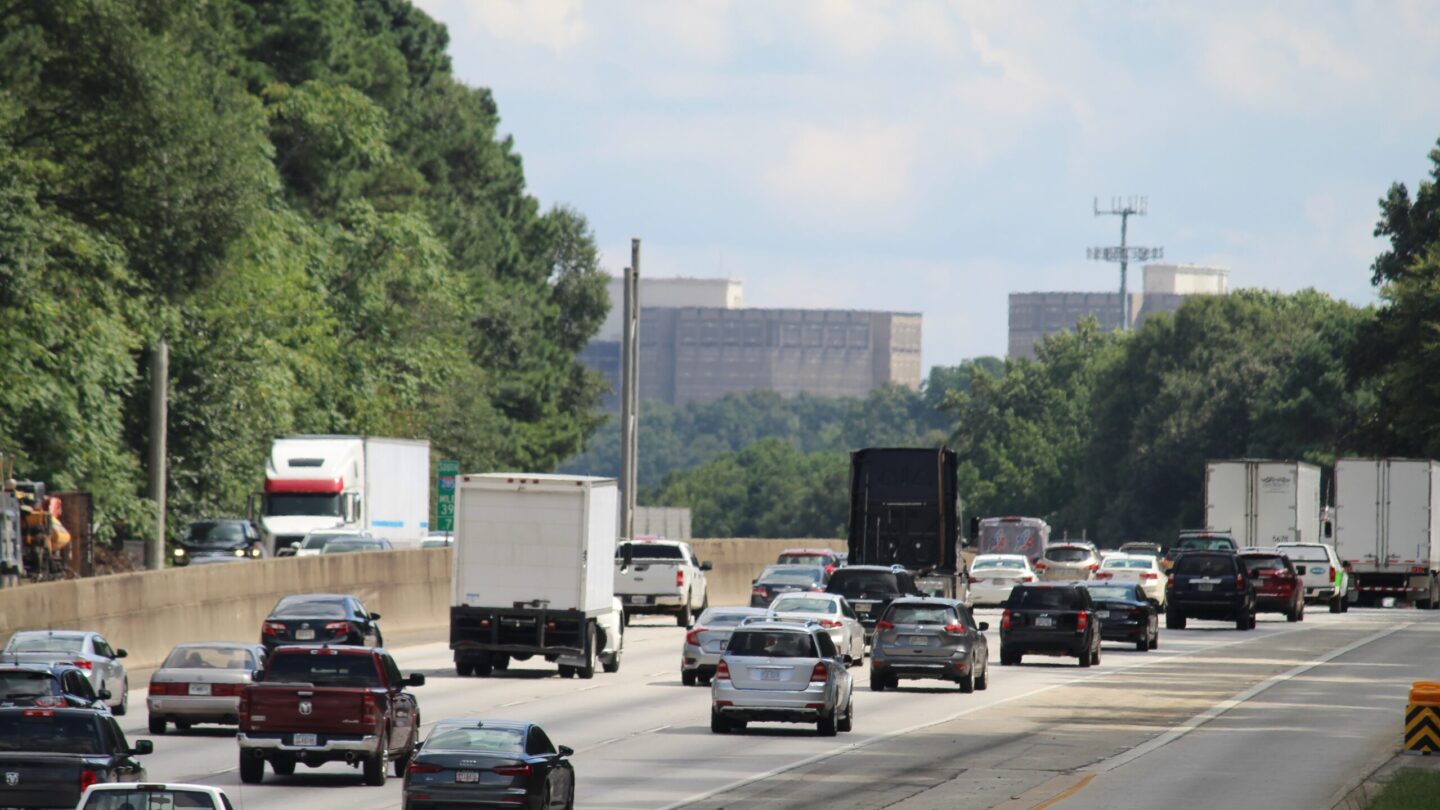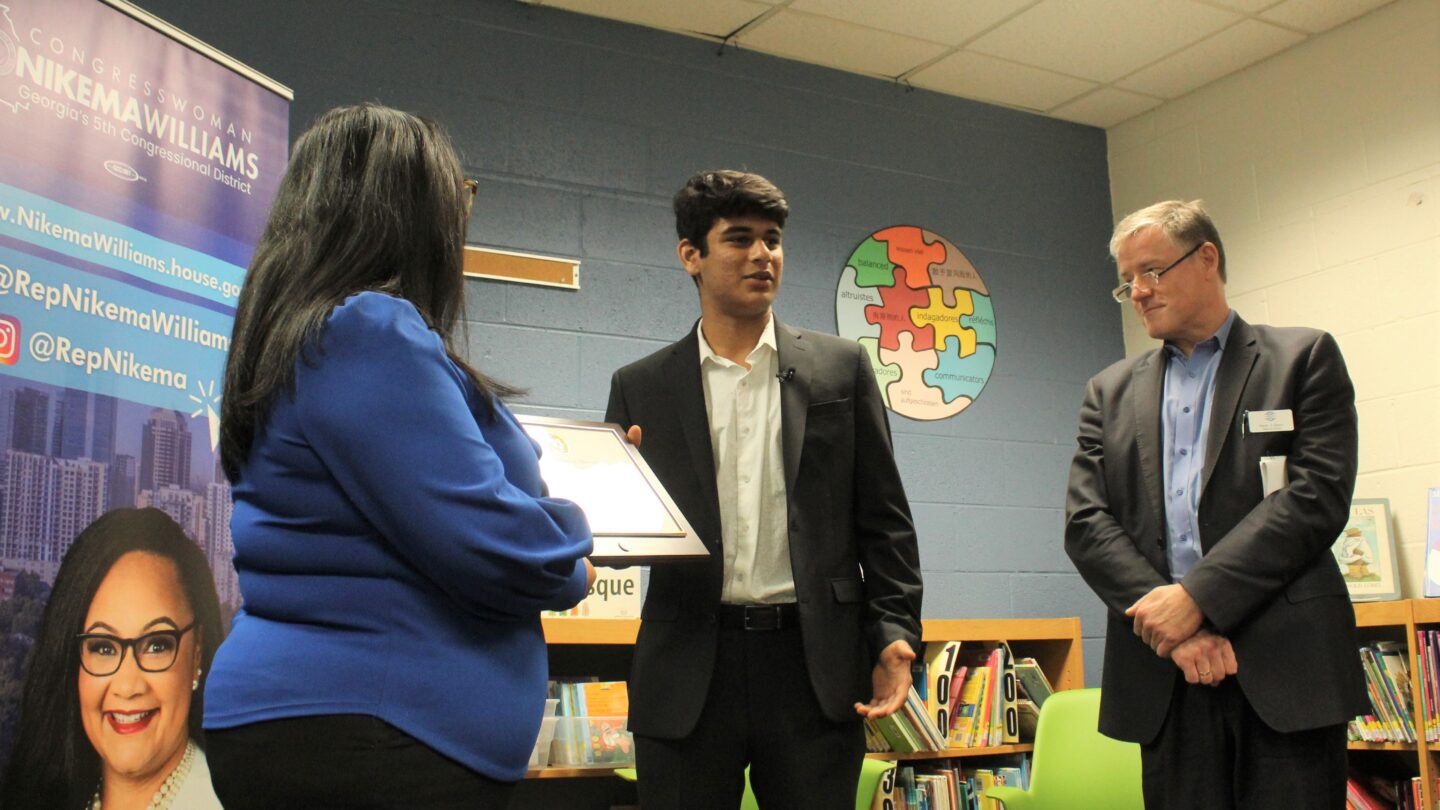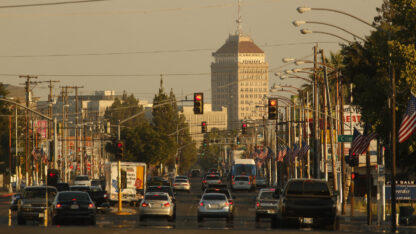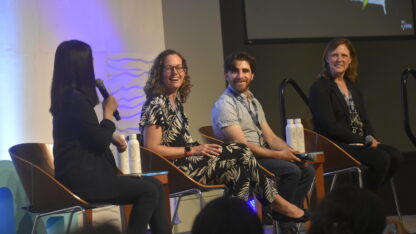How technology is helping some breathe a bit easier

In the early days of the pandemic, you may have read headlines or perhaps even witnessed first-hand how many medical facilities struggled to keep pace with an onslaught of COVID-19 patients who were in desperate need of oxygen.
For Asanshay Gupta, a high school student at Atlanta International School, that moment in time inspired him
“When I found out about that, I really felt like I could make a difference by creating something that could help them figure out what they needed and how they could budget their oxygen to suit different patients,” he said.
So Gupta designed an app called Oxygen Planner that helps hospitals and other health care facilities better manage their supply of oxygen.
“It’s really cool to see something that I created at my house being used in 90-plus countries by over a thousand hospitals,” said Gupta.
It’s one example of how technology is helping us breathe a bit easier.
For the past seven years, high school students from around the country have been submitting ideas for the Congressional App challenge. Gupta was this year’s winner for Georgia’s 5th Congressional District,
The 11th grader’s family and school administrators were there recently as U.S. Rep. Nikema Williams presented him with a plaque. It was finals week for Gupta, but he took a brief study break to describe how the app works.
“Essentially, we calculate how much oxygen is in a cylinder or is in a certain volume of liquid oxygen. And we show the user different machines that they can choose from, that would basically replicate whatever machines are actually in their hospital,” said Gupta. “And then we do a calculation to calculate how much oxygen that ventilator would use.”

Gupta’s creation held even more significance for Williams — who, in the spring of 2020, was among the first in Georgia to be hospitalized with COVID-19.
She says this level of student innovation during a pandemic is remarkable.
“They’ve been through so much in the past two years and to see someone not just come out of the pandemic more resilient than before, but to step up and create an app that is serving his community, not just Atlanta, but our global community, it’s something definitely to be proud of,” Williams said.
Air quality reports, in real time
For patients dealing with COVID-19 or other respiratory conditions that require supplemental oxygen, the app is proving to be a helpful tool.
For others — whose health requires them to keep a close eye on the air quality and pollution levels outside, other tech innovations are helping with that too.
DeAnna Oser is the ambient air monitoring program manager for the Georgia Department of Natural Resources.
Her department oversees nearly three dozen monitoring stations across Georgia, including several here in metro Atlanta, which constantly survey the air for fine particulate matter.
“We also measure for ozone, that’s another big one for Atlanta, we measure for nitrogen dioxides, sulfur dioxides, carbon monoxide and a variety of volatile organic compounds,” said Oser.
She says there are two types of data collected — physical samples, which are done every three to six days and sent to a lab to be analyzed. And then there’s continuous collection, which uses technology to measure particles in the air and then feedback that data in real time.
“You may have heard of the air quality index or AQI. Essentially, that’s a percentage of the EPA health base limit that’s being measured,” said Oser. “You’ll see it on your TV, you’ll see it on maps when you go to either our website or EPA’s and you’ll even see it at smart phone app — it’ll ll say the AQI for today is — and that’s all coming from the data we’re collecting.”
While this information might not always be perfect (it goes through an extra level of scrutiny before it’s officially reported for the record) it does offer a level of real-time information. Oser says this also helps them provide smog alert forecasts.
“Those come from our office, as well is in collaboration with some Georgia Tech meteorologists,” said Oser. “And they actually look at the concentrations that we’re measuring with these monitors and the wind patterns and the previous day’s concentrations and the weather patterns.”
She says the technology for commercially-available air-quality monitoring equipment is improving too. She says while these sensors may not as sophisticated as official measurements, they can still give a sense of what the air is like around your home.
“Because our monitors kind of monitor a very wide scale, and I can’t tell you what’s happening at your street corner,” said Oser. “These air sensors will allow you to see what’s happening in your backyard.”








